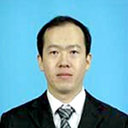Italian
Albanian
Arabic
Armenian
Azerbaijani
Belarusian
Bengali
Bosnian
Catalan
Czech
Danish
Deutsch
Dutch
English
Estonian
Finnish
Français
Greek
Haitian Creole
Hebrew
Hindi
Hungarian
Icelandic
Indonesian
Irish
Italian
Japanese
Korean
Latvian
Lithuanian
Macedonian
Mongolian
Norwegian
Persian
Polish
Portuguese
Romanian
Russian
Serbian
Slovak
Slovenian
Spanish
Swahili
Swedish
Turkish
Ukrainian
Vietnamese
Български
中文(简体)
中文(繁體)
Turkish Journal of Medical Sciences 2019-Oct
Solo gli utenti registrati possono tradurre articoli
Entra registrati
Il collegamento viene salvato negli appunti
Il database di erbe medicinali più completo supportato dalla scienza
- Funziona in 55 lingue
- Cure a base di erbe sostenute dalla scienza
- Riconoscimento delle erbe per immagine
- Mappa GPS interattiva - tagga le erbe sul luogo (disponibile a breve)
- Leggi le pubblicazioni scientifiche relative alla tua ricerca
- Cerca le erbe medicinali in base ai loro effetti
- Organizza i tuoi interessi e tieniti aggiornato sulle notizie di ricerca, sperimentazioni cliniche e brevetti
Digita un sintomo o una malattia e leggi le erbe che potrebbero aiutare, digita un'erba e osserva le malattie ei sintomi contro cui è usata.
* Tutte le informazioni si basano su ricerche scientifiche pubblicate





